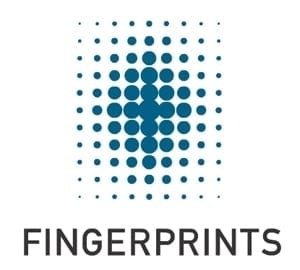 Fingerprint Cards is a prolific biometric technology vendor, with its fingerprint sensors shipping on 300 smartphone models. But mobile fingerprint scanning is only part of the equation for the company that aims to be a leading biometric company – FPC became a multimodal biometrics provider last year with the acquisition of Delta ID, and the applications of its fingerprint sensor tech are expending into the smart card, PC and IoT markets.
Fingerprint Cards is a prolific biometric technology vendor, with its fingerprint sensors shipping on 300 smartphone models. But mobile fingerprint scanning is only part of the equation for the company that aims to be a leading biometric company – FPC became a multimodal biometrics provider last year with the acquisition of Delta ID, and the applications of its fingerprint sensor tech are expending into the smart card, PC and IoT markets.
FindBiometrics President Peter O’Neill recently spoke with Christian Fredrikson, President and CEO, Fingerprint Cards. The conversation begins with discussion of the company’s 2017 highlights, before moving on to the topic of the company’s recent expansion into iris recognition. The interview then delves into the biometric smart cards market, outlining the company’s activity in that arena, before finishing with a comprehensive preview of what Fingerprint Cards has in store for 2018, including its plans for its in-display smartphone sensor technology.
Read our full interview with Christian Fredrikson, President and CEO, Fingerprint Cards:
Peter O’Neill, President, FindBiometrics: Has this been a good year for the company? It’s been quite a year for the industry in general. What are some of the highlights for Fingerprint Cards in the past year?
Christian Fredrikson, President and CEO, Fingerprint Cards: First of all, if we look at capacitive fingerprint sensors for mobile phones, which make up the bulk of our business, we have seen a rapid commoditization of that industry. The competitive intensity has increased with prices for capacitive fingerprint sensors for smartphones dropping by as much as 30 percent in 2017 alone.
I suppose that’s part of being in such a high-tech, fast moving industry, and so strongly focused on China as we currently are. It has been a tough year overall in the mobile fingerprint sensor market, but we have done well in our fight for market share as our OEM customers have gone for dual- and even triple sourcing.
At the same time, we have been investing in new promising areas where we can apply our technology and know-how. It’s very clear that we need to diversify into areas outside of fingerprint sensors for mobile phones and tablets. Our ambition is to become a leading biometrics company, which means that we need to offer solutions based on multiple biometric modalities, and also take a leading role in biometric identity management and in developing secure cloud solutions.
FB: You made some steps as a company to address some of these issues by moving into other modalities as well. You now offer both iris and fingerprint. Can you talk a little bit about multi-modality? It is a very hot topic in our industry right now, and you have taken a leadership role there by offering iris and fingerprint. Can you talk a little bit about that please?
Fingerprints: Yes, we have expanded into new verticals and new biometric modalities. If you want to be a leading biometrics company, you cannot just rely on fingerprint sensors. So we felt that it was going to be very important for us to expand into new areas, and our acquisition of Delta ID – a world-leading iris recognition solutions provider – in 2017 should be viewed in this context. We are of course also looking at other modalities, [for example:] voice and face recognition.
Our acquisition of Delta ID’s leading iris recognition technology was our first step and now we are looking at combining modalities. You can combine the functionality of, for example, iris and fingerprint recognition. Implementing this in a smartphone enables you to increase the security level. As you know, iris is by far the most secure biometric modality, except for DNA. So, it allows you to implement highly secure systems, which is important for many applications, not least payments. Of course, iris recognition is also well-proven within the Aadhaar program in India, so we felt that it was a great addition when we did that acquisition in February last year.
We’re also expanding with iris into other industries like automotive, the whole IoT industry with many different devices, and then in cloud solutions. The cloud is a big technological step for us, as we start enabling biometric matching to be done in the cloud and not just locally on the device itself. This opens up new opportunities and new business models for us as well.
FB: It’s interesting, Christian, the cloud aspect. We held a webinar just this past December – the first ever webinar speaking about cloud technology, and biometrics in the cloud versus on device – and there was a lot of interest. It was quite remarkable for the first focused conversation about that. So I agree, I think there will be a lot more conversations about cloud and IoT especially around specific industries like financial, etc. And speaking of financial, the whole biometric smart card market has really become very fast moving in our industry over the past few years. Can you tell us what you are doing in that area and maybe speak about some of the drivers in this particular market, why is this all happening now?
Fingerprints: Yes, we see great potential in the smart card area, where we have a very strong position as a company. We have invested heavily in the last 18 months and we intend to take a clear leadership position. Our fingerprint sensor solution for smart cards is the most power-efficient module on the market, excelling in contactless power harvesting, which is the fundamental criteria for a functioning biometric contactless card. Also, our solution is distributed using an industry standard delivery format, making it easy to integrate using existing infrastructure and machinery.
Things are really moving in this space at the moment. We can really sense the same excitement around biometric smart cards as we experienced with the mobile phone industry about four years ago. You can truly kind of see and sense that that is happening, and that all the parts are coming together now.
We have formed many partnerships with key players in the value chain, and our solution is included in various reference designs and pilot projects with key industry players. We have made our first deliveries and we are ready to support high-volume production today. We expect to be able to announce a number of important market trials in the first half of 2018.
There are different reasons for the smart card industry’s growing interest in biometric solutions. There is a clear business opportunity, but this is also about mitigating risk. Both of them are important. Fraud is a big problem, and the PIN code system is just not good enough. At the same time, hackers’ capabilities are increasing all the time, putting more pressure on financial institutions to keep up.
If you look at this from the consumer’s point of view then, getting rid of PIN codes would make life easier and more secure. According to a recent study we did, consumers think that payment cards is the next big application area for fingerprint sensors, beyond smartphones. Thanks to biometrics, the cap on contactless payments can be raised, which will improve convenience and efficiency.
FB: I understand you’ll be at the CES show in Las Vegas this week – January 9-12, and also at Mobile World Congress in Barcelona in February, where I look forward to meeting you. What’s coming next for your company?
Fingerprints: Well, we will continue focusing on the expansion into new areas outside of fingerprint sensors for mobile phones, both in terms of using other modalities like iris, and expanding into other verticals like the smart card industry, the automotive industry and IoT. We see attractive growth in biometric solutions for door locks and computer mouses, which is very positive.
I think the biggest single opportunity for us now is biometric smart cards. 4 billion cards are produced every year, out of which 3.5 billion are payment cards. This is a huge opportunity in terms of bringing value and convenience to end users and reducing fraud in the industry.
I am also excited about our cloud solution; to be part of building smart cities, and getting our first commercial cloud solutions deal, with central biometric matching, an extremely secure way of doing it that we have built for both fingerprint sensors as well as for iris.
Finally, we will continue developing our solutions in the mobile business, with a number of new versions of our capacitive sensors, offering extreme cost efficiency and a high level of quality and security. We are also continuing to work on our in-display technology, which has generated a lot of interest in the industry. Our objective is to enable users to authenticate themselves by placing their fingers anywhere on the display panel of a smartphone. I believe our technology is disruptive, and very different from what anybody else in the industry is doing right now, but it also requires much more work to take to market.
FB: Well Christian, thank you so much for taking the time to speak with us today, it has been quite a year for your company, and quite a year for our industry. I look forward to seeing you again at the Mobile World Congress show in Barcelona. Thanks again for taking the time today.
Fingerprints: Thank you, very good talking to you Peter, and see you soon then.





![INTERVIEW: Fingerprint Cards SVP Thomas Rex Talks Biometric Cards at Money20/20 Europe [AUDIO]](https://idtechwire.com/wp-content/uploads/M2020EU18-FPC-Thomas-Rex-2-150x150.jpg)

Follow Us